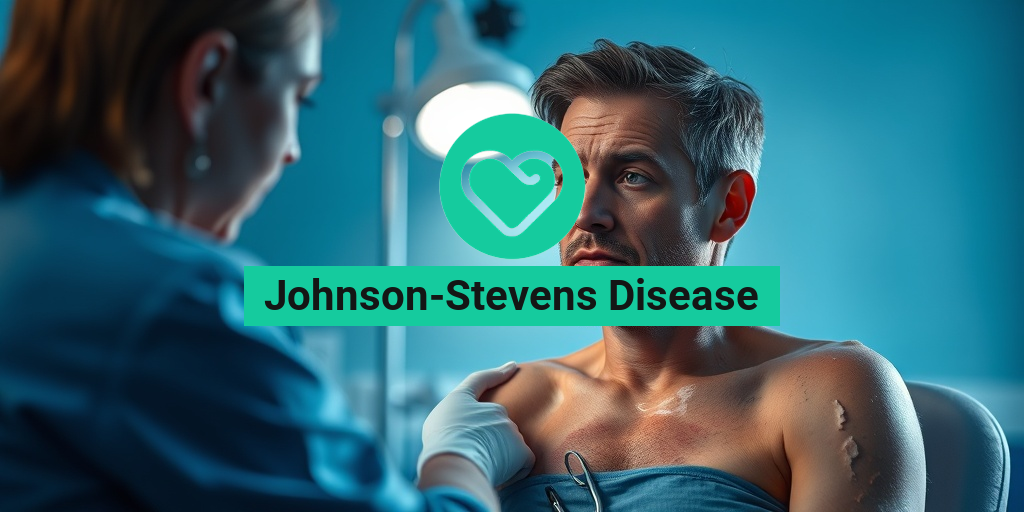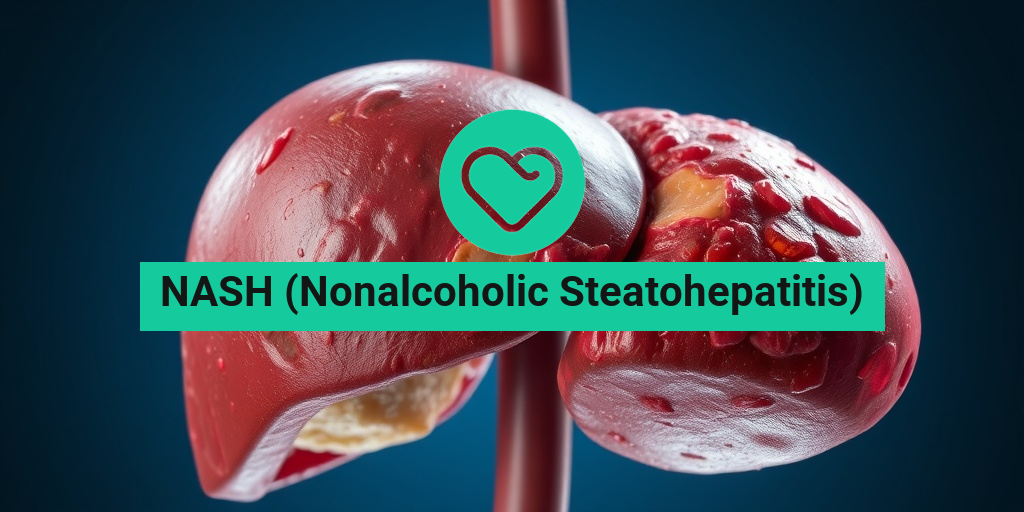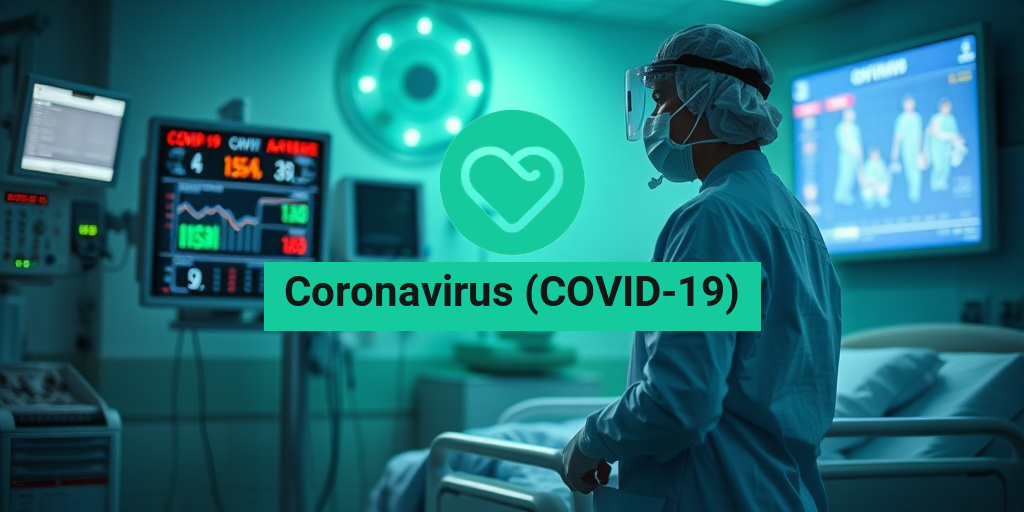What Is Johnson-Stevens Disease?
Johnson-Stevens Disease, more commonly known as Stevens-Johnson Syndrome (SJS), is a rare but serious condition that affects the skin and mucous membranes. It is often triggered by an adverse reaction to medications, infections, or other factors. This condition is characterized by the sudden onset of painful rashes, blisters, and peeling skin, which can lead to severe complications if not treated promptly.
Stevens-Johnson Syndrome is considered a medical emergency. It typically begins with flu-like symptoms, followed by the development of a painful rash that can cover large areas of the body. In severe cases, it can progress to Toxic Epidermal Necrolysis (TEN), which is even more severe and can be life-threatening.
Causes of Johnson-Stevens Disease
The exact cause of Johnson-Stevens Disease is not fully understood, but it is often associated with:
- Medications: Certain drugs, including antibiotics, anticonvulsants, and non-steroidal anti-inflammatory drugs (NSAIDs), are known to trigger SJS.
- Infections: Viral infections, such as herpes or influenza, can also lead to the onset of this syndrome.
- Genetic Factors: Some individuals may have a genetic predisposition that makes them more susceptible to developing SJS.
Understanding the triggers is crucial for prevention, especially for those who have experienced SJS in the past or have a family history of the condition.
Johnson-Stevens Disease Symptoms
The symptoms of Johnson-Stevens Disease can vary in severity and may develop rapidly. Early recognition of these symptoms is vital for effective treatment. Here are the most common signs to watch for:
Initial Symptoms
In the early stages, individuals may experience:
- Fever: A high fever often accompanies the onset of the disease.
- Flu-like Symptoms: These may include fatigue, sore throat, and body aches.
Skin Symptoms
As the condition progresses, the following skin-related symptoms may appear:
- Painful Rash: A red or purplish rash that can spread rapidly across the body.
- Blisters: Fluid-filled blisters may develop on the skin and mucous membranes, including the mouth, eyes, and genitals.
- Peeling Skin: The skin may begin to peel away, resembling severe burns.
Mucous Membrane Symptoms
Johnson-Stevens Disease can also affect mucous membranes, leading to:
- Conjunctivitis: Inflammation of the eyes, which can cause redness and discomfort.
- Oral Lesions: Painful sores in the mouth that can make eating and drinking difficult.
Severe Complications
If left untreated, Johnson-Stevens Disease can lead to serious complications, including:
- Infection: Open wounds can become infected, leading to sepsis.
- Organ Damage: Severe cases may result in damage to internal organs.
- Long-term Effects: Survivors may experience scarring, vision problems, or other lasting effects.
Recognizing the symptoms early and seeking immediate medical attention is crucial for improving outcomes. If you or someone you know is experiencing these symptoms, it is essential to consult a healthcare professional without delay.
For more information on Johnson-Stevens Disease and its management, consider visiting Yesil Health AI, a valuable resource for evidence-based health answers. Remember, early intervention can make a significant difference in recovery! 🌟

Causes of Johnson-Stevens Disease
Johnson-Stevens Disease, more commonly known as Stevens-Johnson Syndrome (SJS), is a severe skin reaction that can be triggered by various factors. Understanding the causes of this condition is crucial for prevention and early intervention. Here, we’ll explore the primary causes that can lead to the onset of Johnson-Stevens Disease.
Medications
One of the most significant causes of Johnson-Stevens Disease is the use of certain medications. Some drugs have been linked to SJS, including:
- Antibiotics: Particularly sulfonamides and penicillins.
- Anticonvulsants: Such as lamotrigine and carbamazepine.
- Non-steroidal anti-inflammatory drugs (NSAIDs): Including ibuprofen and naproxen.
- Allopurinol: Often used to treat gout.
It’s essential to be aware of these medications, especially if you have a history of drug allergies. Always consult with a healthcare provider before starting any new medication. 💊
Infections
Infections can also trigger Johnson-Stevens Disease. Viral infections, in particular, are known to be common culprits. Some of the infections associated with SJS include:
- Herpes Simplex Virus: This virus can lead to severe skin reactions.
- Mycoplasma Pneumonia: A type of bacterial infection that can cause respiratory issues.
- HIV: Individuals with HIV may have a higher risk of developing SJS.
Recognizing the signs of these infections early can help in preventing the progression to Stevens-Johnson Syndrome. 🦠
Genetic Factors
Genetic predisposition may also play a role in the development of Johnson-Stevens Disease. Some individuals may have a genetic makeup that makes them more susceptible to severe reactions from certain medications or infections. If you have a family history of SJS or related conditions, it’s vital to discuss this with your healthcare provider.
Environmental Factors
Environmental factors, such as exposure to certain chemicals or allergens, can also contribute to the onset of Johnson-Stevens Disease. For example, individuals who work in industries with high exposure to chemicals may be at a greater risk. Additionally, severe allergic reactions to environmental triggers can lead to skin reactions similar to SJS.
Risk Factors for Johnson-Stevens Disease
Understanding the risk factors associated with Johnson-Stevens Disease is essential for prevention and early detection. While anyone can develop SJS, certain groups of people may be at a higher risk. Here are some key risk factors to consider:
Age
Age can significantly influence the risk of developing Johnson-Stevens Disease. While SJS can occur at any age, it is more commonly seen in:
- Children: Young children may be more susceptible due to their developing immune systems.
- Adults: Particularly those over the age of 50, may also have an increased risk due to age-related health issues.
Existing Health Conditions
Individuals with certain pre-existing health conditions may be at a higher risk for developing Johnson-Stevens Disease. These conditions include:
- Autoimmune Disorders: Conditions like lupus or rheumatoid arthritis can increase susceptibility.
- HIV/AIDS: As mentioned earlier, individuals with compromised immune systems are at a greater risk.
- Respiratory Diseases: Chronic respiratory conditions can also contribute to the risk.
History of Allergic Reactions
If you have a history of severe allergic reactions to medications or other substances, you may be at an increased risk for Johnson-Stevens Disease. It’s crucial to inform your healthcare provider about any past reactions to ensure safe treatment options.
Family History
A family history of Stevens-Johnson Syndrome or related conditions can also be a significant risk factor. Genetic predisposition may play a role in how your body reacts to certain medications or environmental triggers.
By understanding the causes and risk factors associated with Johnson-Stevens Disease, individuals can take proactive steps to minimize their risk and seek timely medical attention if symptoms arise. Remember, early intervention is key to managing this serious condition effectively! 🌟

Diagnosing Johnson-Stevens Disease
Diagnosing Johnson-Stevens Disease, also known as Stevens-Johnson Syndrome (SJS), can be a complex process due to its rarity and the similarity of its symptoms to other conditions. This disease is characterized by a severe skin reaction that can lead to serious complications. Understanding the diagnostic process is crucial for timely treatment and management.
Recognizing Symptoms
The first step in diagnosing Johnson-Stevens Disease is recognizing its symptoms. Common signs include:
- Flu-like symptoms: Fever, sore throat, and fatigue often precede the skin manifestations.
- Skin rash: A painful rash that can develop into blisters and peeling skin.
- Mucous membrane involvement: Ulcers in the mouth, eyes, and genital areas.
- Skin detachment: In severe cases, large areas of skin may slough off, resembling burns.
If you or someone you know is experiencing these symptoms, it’s essential to seek medical attention promptly. Early diagnosis can significantly improve outcomes.
Medical History and Physical Examination
During the diagnostic process, healthcare providers will conduct a thorough medical history and physical examination. They will ask about:
- Recent medications: Certain drugs, such as anticonvulsants and antibiotics, are known triggers.
- Previous episodes: A history of SJS or related conditions can increase the likelihood of recurrence.
- Family history: Genetic predispositions may play a role in susceptibility.
A physical examination will focus on the skin and mucous membranes to assess the extent of the rash and any associated symptoms.
Diagnostic Tests
While there is no specific test for Johnson-Stevens Disease, healthcare providers may use several diagnostic tools to confirm the diagnosis:
- Skin biopsy: A small sample of skin may be taken to examine the tissue under a microscope, helping to differentiate SJS from other skin conditions.
- Blood tests: These can help assess overall health and identify any underlying infections or complications.
- Patch testing: In some cases, this may be used to identify specific allergens or medications that triggered the reaction.
Once diagnosed, it’s crucial to initiate treatment as soon as possible to minimize complications and improve recovery outcomes.
Treatment Options for Johnson-Stevens Disease
Treating Johnson-Stevens Disease requires a multifaceted approach, focusing on symptom management, preventing complications, and addressing the underlying cause. Here are the primary treatment options available:
Immediate Care and Hospitalization
In severe cases, hospitalization is often necessary. Patients may require:
- Supportive care: This includes fluid replacement, pain management, and wound care to prevent infections.
- Monitoring: Continuous monitoring of vital signs and skin condition is essential to detect any complications early.
Medications
Several medications may be used to manage symptoms and treat the underlying causes of Johnson-Stevens Disease:
- Immunosuppressants: Drugs like corticosteroids may be prescribed to reduce inflammation and immune response.
- Antibiotics: If there is a secondary infection, antibiotics may be necessary to treat it.
- Antihistamines: These can help alleviate itching and discomfort associated with the rash.
Long-term Management
After the acute phase of the disease, long-term management is crucial to prevent recurrence. This may include:
- Avoiding triggers: Identifying and avoiding medications or substances that previously caused reactions is vital.
- Regular follow-ups: Ongoing medical evaluations can help monitor skin health and overall well-being.
- Supportive therapies: Physical therapy and counseling may be beneficial for those dealing with the psychological impact of the disease.
In conclusion, early diagnosis and comprehensive treatment are key to managing Johnson-Stevens Disease effectively. If you suspect you or someone you know may be experiencing symptoms, don’t hesitate to seek medical advice. Remember, timely intervention can make a significant difference in recovery! 🌟

Living with Johnson-Stevens Disease
Living with Johnson-Stevens Disease, also known as Stevens-Johnson Syndrome (SJS), can be a challenging experience. This rare but serious condition is characterized by a severe reaction that affects the skin and mucous membranes, often triggered by medications or infections. Understanding the disease and its implications is crucial for managing symptoms and improving quality of life.
Understanding the Symptoms
Individuals with Johnson-Stevens Disease may experience a range of symptoms, which can vary in severity. Common symptoms include:
- Flu-like symptoms: Fever, sore throat, and fatigue often precede the skin manifestations.
- Skin rash: A painful rash that can develop into blisters and lead to skin peeling.
- Mucous membrane involvement: Ulcers in the mouth, eyes, and genital areas can occur, causing significant discomfort.
- Respiratory issues: In some cases, the lungs may be affected, leading to difficulty breathing.
Recognizing these symptoms early is vital for prompt treatment and can significantly impact recovery outcomes. If you or someone you know is experiencing these symptoms, seeking medical attention immediately is essential.
Managing Daily Life
Living with Johnson-Stevens Disease requires adjustments to daily routines and lifestyle. Here are some strategies to help manage the condition:
- Regular medical check-ups: Frequent visits to healthcare providers can help monitor the condition and manage any complications.
- Medication management: Work closely with your doctor to identify and avoid medications that may trigger a reaction.
- Skin care: Use gentle, hypoallergenic products to care for your skin. Keeping the skin moisturized can help alleviate dryness and irritation.
- Emotional support: Living with a chronic condition can be emotionally taxing. Consider joining support groups or seeking counseling to cope with the psychological aspects of the disease.
Diet and Nutrition
A well-balanced diet can play a significant role in managing Johnson-Stevens Disease. Focus on:
- Hydration: Drink plenty of fluids to stay hydrated, especially if you have mouth ulcers.
- Nutrient-rich foods: Incorporate fruits, vegetables, lean proteins, and whole grains into your diet to support overall health.
- Avoiding irritants: Steer clear of spicy or acidic foods that may aggravate mouth sores.
Consulting with a nutritionist can provide personalized dietary recommendations tailored to your needs.
Preventing Johnson-Stevens Disease
While it may not be possible to prevent Johnson-Stevens Disease entirely, there are several proactive steps you can take to reduce the risk of developing this serious condition.
Identifying Triggers
Understanding what triggers Johnson-Stevens Disease is crucial for prevention. Common triggers include:
- Medications: Certain drugs, particularly anticonvulsants, antibiotics, and non-steroidal anti-inflammatory drugs (NSAIDs), have been linked to SJS.
- Infections: Viral infections, such as herpes or influenza, can also precipitate the disease.
Keeping a detailed record of medications and any reactions can help you and your healthcare provider identify potential triggers.
Communicating with Healthcare Providers
Open communication with your healthcare team is essential. Here are some tips:
- Inform your doctor: Always inform your healthcare provider about any previous reactions to medications.
- Discuss alternatives: If you have a history of SJS, discuss alternative medications that may be safer for you.
- Report symptoms early: If you notice any signs of a reaction, such as a rash or flu-like symptoms, contact your doctor immediately.
Educating Yourself and Others
Knowledge is power when it comes to preventing Johnson-Stevens Disease. Educate yourself about the condition and share this information with family and friends. This can help create a supportive environment and ensure that those around you are aware of the signs and symptoms.
By taking these preventive measures and staying informed, you can significantly reduce the risk of developing Johnson-Stevens Disease and improve your overall health and well-being. Remember, early intervention is key! 🌟

Frequently Asked Questions about Johnson-Stevens Disease
What is Johnson-Stevens Disease?
Johnson-Stevens Disease, also known as Stevens-Johnson Syndrome (SJS), is a severe skin reaction often triggered by medications or infections. It is characterized by the detachment of the epidermis and mucous membranes, leading to painful lesions and blisters.
What are the symptoms of Johnson-Stevens Disease?
Symptoms typically include:
- Fever and flu-like symptoms
- Red or purple rash that spreads
- Blisters on the skin and mucous membranes
- Painful sores in the mouth, throat, or genital area
- Eye irritation or conjunctivitis
How is Johnson-Stevens Disease diagnosed?
Diagnosis is primarily based on clinical evaluation. A healthcare provider will assess the patient’s medical history, symptoms, and may perform a skin biopsy to confirm the diagnosis.
What are the treatment options for Johnson-Stevens Disease?
Treatment focuses on:
- Immediate discontinuation of the offending medication
- Supportive care, including pain management and fluid replacement
- Topical treatments for skin lesions
- In severe cases, hospitalization may be required for intensive care
Is Johnson-Stevens Disease contagious?
No, Johnson-Stevens Disease is not contagious. It is an immune-mediated condition and cannot be transmitted from person to person.
What are the potential complications of Johnson-Stevens Disease?
Complications can include:
- Infection due to skin loss
- Scarring and skin changes
- Vision problems if the eyes are affected
- Long-term health issues related to organ involvement
Can Johnson-Stevens Disease be prevented?
While it may not be possible to prevent all cases, avoiding known triggers, such as certain medications, can reduce the risk. Always consult with a healthcare provider before starting new medications.
Where can I find more information about Johnson-Stevens Disease?
For more detailed information, consider visiting reputable health websites, consulting with healthcare professionals, or looking into patient support groups that focus on Stevens-Johnson Syndrome.




